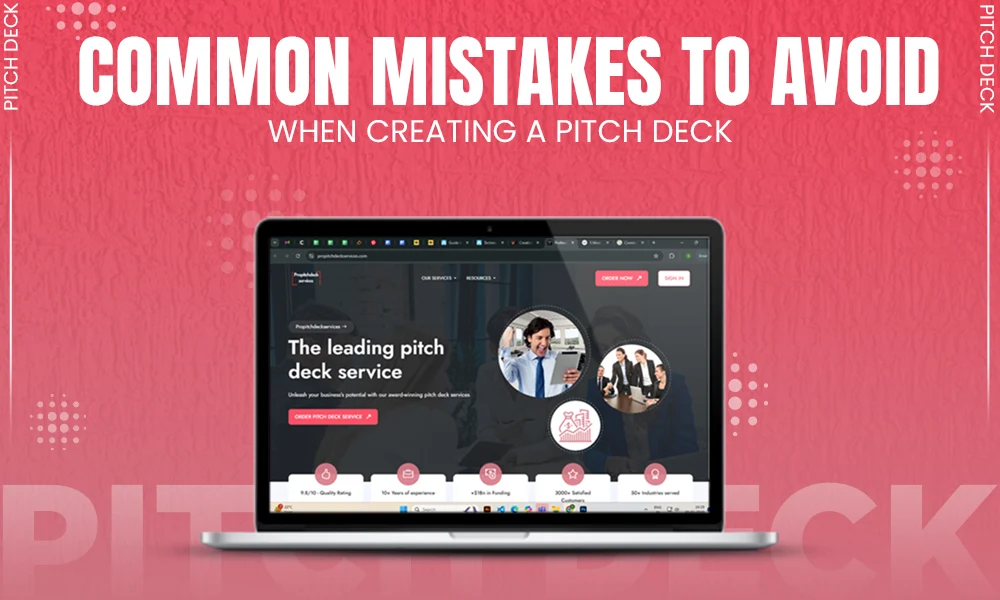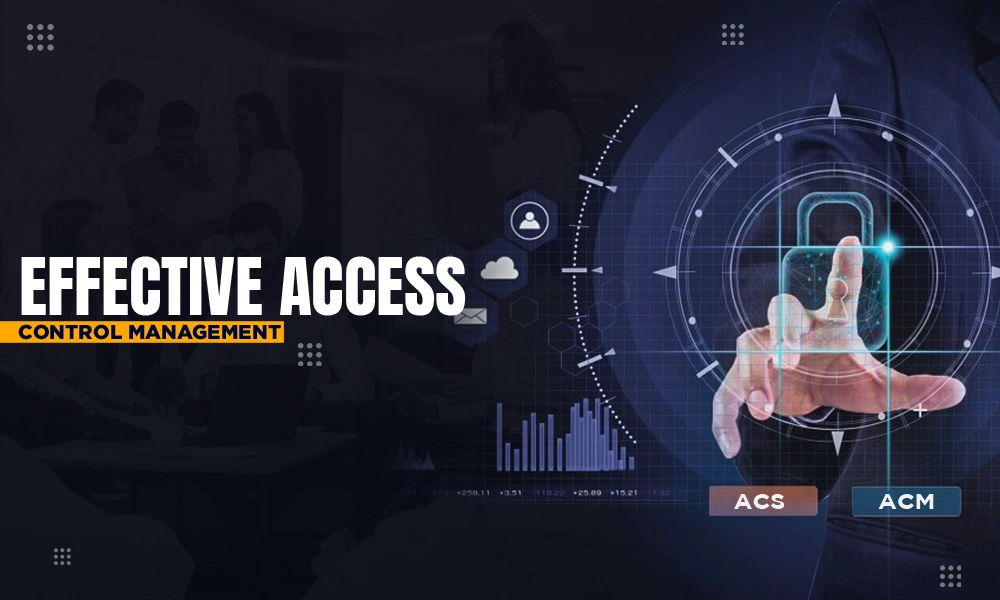A Holistic Approach: How Enterprise GRC Solutions Drive Business Performance
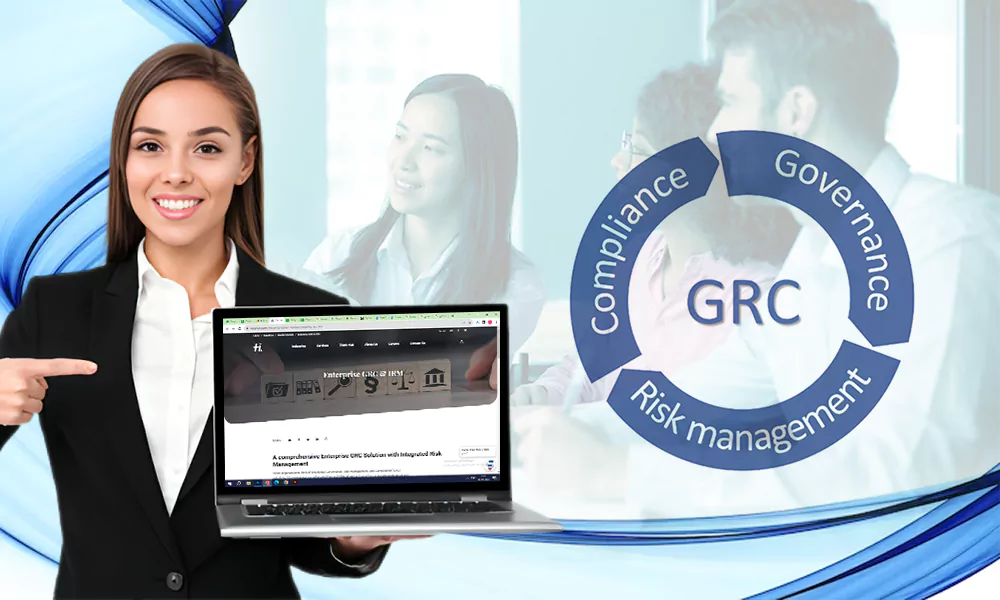
KEY TAKEAWAYS
- Understanding Enterprise GRC means managing an organization’s governance, risk, and compliance activities.
- It improves transparency by providing real-time data, analytics, and reporting capabilities.
- To implement GRC solutions, the company should assess requirements, and scalability, and monitor changing trends consistently.
In this rapidly changing commercial environment, following regulations, reducing pitfalls, and consistent lapses have emerged as major concerns for many sectors. Businesses are turning to Enterprise Governance, Risk, and Compliance (GRC) solutions to understand these challenges.
In this comprehensive guide, we will look into the details of it and explore how these holistic responses drive business performance by improving transparency, decreasing risks, and upgrading operations.
So, fasten your seatbelts as we embark on an enlightening journey into the world of Enterprise GRC solutions and its transformative impact on organizations.
Understanding Enterprise GRC
Enterprise GRC refers to organizations’ approach to managing governance, assessing risk, and compliance activities with their strategic purposes.
A comprehensive variety of interlinked practices, detailed processes, and multifaceted technologies enable institutes to systematically determine, examine, and regulate exposures to loss, follow rules, and implement winning strategies.
Bringing together these necessary elements enables companies to navigate the complexities of the business landscape and make informed decisions that drive long-term success.
The Benefits of Enterprise GRC Solutions
Enhanced Transparency
Enterprise GRC solutions give organizations a holistic view of their operations, enabling transparency and visibility into risks, obligatory status, and governance practices.
The organizational culture of integrity fostered by this direct openness in operations enables careful decision-making and accountability at every level.
Risk Mitigation
Enterprise GRC solutions help companies identify, assess, and implement systematic risk management processes.
By proactively addressing potential risks, the brands can reduce the likelihood of costly disruptions, damage to reputation, and regulatory non-compliance, ultimately safeguarding business continuity.
Regulatory Compliance
GRC solutions ensure organizations follow relevant regulations, industry standards, and internal policies. They provide a centralized platform for tracking and managing compliance requirements, organizing disciplined workflows, and generating audit trails.
This streamlined process reduces manual efforts and minimizes the danger of misregulation and associated penalties.
Improved Decision-Making
GRC solutions provide the brands with real-time data, analytics, and reporting capabilities. The interconnected technologies facilitate those responsible for strategic decisions retrieving precise and current data, predicting hazards, and judging the results of prospective decisions on adherence and administration.
Informed decision-making strengthens with strategic planning and execution resulting in improved business outcomes.

Key Components of Enterprise GRC Solutions
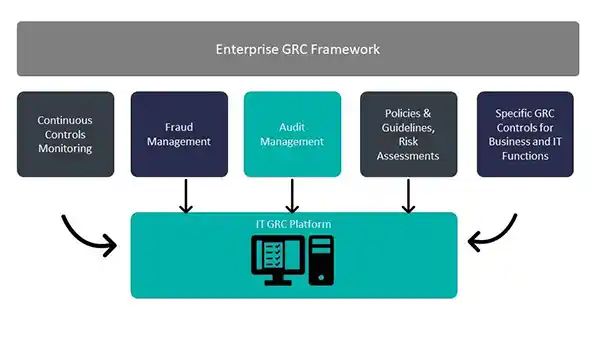
- A governance framework establishing roles, responsibilities, policies, and procedures to ensure oversight and accountability is created through this method’s features.
- Risk management aims to protect value through the complex process of identifying probable yet unforeseen events. Such events could negatively impact the purpose, evaluating their potential significance, prioritizing the most serious dangers, and developing ways to minimize, monitor, and control weaknesses. It includes features ranging from operational troubles to financial, legal, and reputational hazards across a large area in a diverse yet interconnected manner.
- Compliance Management is also relevant. It tracks regulatory requirements, internal policies, and industry standards. It aims to guarantee obedience to the appropriate laws through undertakings like regulation assessment, rule implementation, and review administration.
- There’s another component involved which is reporting and analytics. This component enables corporations to generate comprehensive reports, analyze data, and gain insights into risk exposure, disciplined performance, and governance effectiveness. Reporting and analytics facilitate decision-making and support continuous improvement initiatives.
Implementing Enterprise GRC Solutions
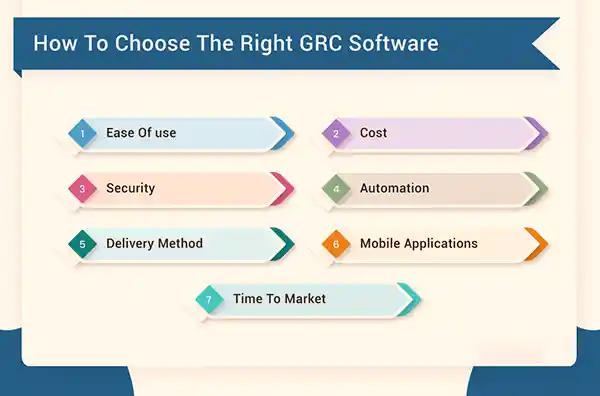
Successful implementation of Enterprise GRC solutions requires a systematic approach:
Assessing Needs
Businesses must identify their specific requirements, considering factors such as industry regulations, organizational goals, and harmful profiles. This assessment helps determine the scope, functionalities, and customization needs of the GRC solution.
Selecting the Right Solution
Businesses should examine and choose a GRC solution that meets their needs. It is relevant to assess scalability, flexibility, integration abilities, ease of use, and vendor assistance are all vital considerations when assessing possibilities.
Implementation and Integration
Once the appropriate service is selected, a well-planned strategy should be implemented. This involves setting up a solution, including it with existing systems, training users, and establishing governance processes.
Ongoing Monitoring and Improvement
Enterprise GRC is an ongoing process. Organizations should continuously monitor and assess its effectiveness, update policies and procedures as needed, and adapt to changes in regulations and business requirements.
Emerging Trends in Enterprise GRC
- Organizations are embracing Integrated GRC Platforms, a progressive trend that unifies governance, risk management, and compliance functionalities. This integration streamlines operations, enhances effectiveness, and provides a comprehensive view of dangers and responsibilities.
- Cybersecurity takes center stage in its strategies, with the escalating frequency and complexity of cyber threats. Robust cybersecurity measures, such as knowledge of pitfalls, managing shortcomings, and incident-response capabilities, are now integral components of its answers.
- Lastly, flexible rules become relevant as the regulatory landscape constantly changes. Flexible GRC solutions can quickly adapt to changing regulatory requirements, compiling new regulations, updating policies, and easily generating necessary reports.
THINGS TO CONSIDER
Some new Enterprise GRC trends are – The culture of resiliency and agility to face GRC challenges, the evolving role of the CIO, third-party risks becoming more critical, ESG Regulations ramp-up, and hybrid work introducing cyber risks.
Conclusion
By giving well-organized supervision of control procedures, risk assessments, and following procedures, Platforms for enterprise-wide governance, pitfalls, and compliance enable businesses to enhance productivity. Moreover, they promote openness and reduce exposure.
As technology changes and regulations become more strict, embracing GRC is a strategic advantage. It is also vital for corporations aiming for consistent growth in a dynamic business landscape. Therefore, embrace the strength of Enterprise GRC effectively and utilize the opportunity to enhance business performance, preserve reputation, and accomplish enduring growth.



